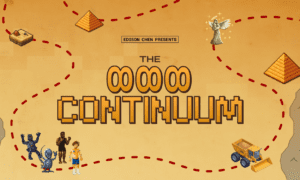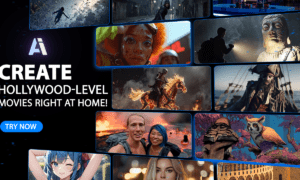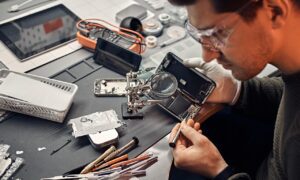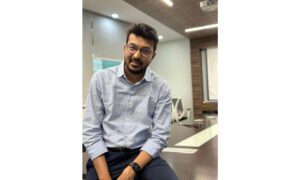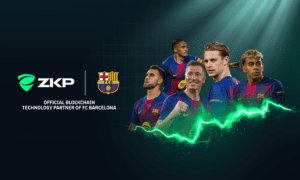Engineering leadership is undergoing a significant transformation, more and more emphasizing soft skills and strategic thinking. LinkedIn’s 2025 Skills Report highlights AI fluency, architectural thinking, and cross-functional collaboration as essential for modern career growth.
To better understand how these changes influence software engineering leadership today, we spoke with Saurav Sharma, Principal Software Engineer, 2025 Cases & Faces Award winner for Achievement in Engineering. As a Hackathon Raptors and IEEE member, he has led transformations across Fortune 500 companies and global markets, helping organizations simplify their architecture, automate key workflows, and scale systems that support millions of users.
As Vice President and Partner at Baanyan Software Services, Saurav introduced internal platforms for consultant allocation, employee management, and timesheet tracking. These systems saved the company approximately $100,000 and accelerated training and placement for junior talent, creating new revenue channels.
Mr. Sharma’s impact also extends to professional development and technical community engagement. He has authored technical books, conducted training seminars for more than 100 participants, and served as the lead code reviewer in several teams, overseeing work from junior developers to team leads.
Saurav Sharma’s journey demonstrates what it takes to transition from execution to influence — and provides practical insights for anyone ready to grow into a leadership role in today’s tech environment.
Mr. Sharma, you streamlined a major database release at Daimler Trucks North America, cut delivery time from two months to one week, and introduced a new automation tool. What helped you lead under that kind of pressure so early in your career?
The release was already behind schedule when I joined the Daimler Trucks project. As someone early in my career, I faced pressure to deliver without established authority. What helped the most was staying calm, breaking the problem down into manageable parts, and focusing on taking action. I identified that database updates across the dealer network were the main blocker. To fix it, I introduced an automation tool and piloted it on a small group to show quick results. At the same time, I handled overnight testing myself — checking features, resolving bugs, and preparing release notes. That one-week sprint replaced what could have taken two months to complete.
The turning point came when I combined technical initiative with consistency. I didn’t try to impress—I focused on removing obstacles and building trust through effort. That shifted the team’s energy: People felt supported and aligned. The successful launch saved the company downtime costs, but more importantly, it built momentum.
This experience became an early lesson in leading through contribution. For aspiring leaders, it shows that credibility often grows from initiative and follow-through, especially when formal authority is absent. Focusing on solutions, supporting the team under pressure, and delivering results can shift dynamics and create space for lasting impact.
Later, at Luxottica – a global eyewear retailer with thousands of stores – you worked on modernizing their retail software platform. You helped integrate in-store systems with e-commerce, enabling customers to transition seamlessly from a physical store experience to online shopping. What was your strategy to unify those channels?
At Luxottica, the main challenge was connecting a traditional in-store system with a separate e-commerce platform. Inventory, purchases, and customer records weren’t synced, creating a fragmented experience. I focused on building a unified architecture that allowed data to move in real time between both channels. We developed APIs to sync purchase history, shopping carts, and inventory data. I also added features like email receipts, product recommendations, and secure card storage with renewal alerts—tools that helped customers move smoothly between stores and online.
This integration improved engagement and increased repeat purchases. Customers received tailored suggestions, while the online store gained visibility into local stock. Luxottica employed this approach to optimize retail operations, closing underperforming stores while introducing hybrid formats that did not compromise sales.
This project underscored the importance of designing systems with users’ and business goals in mind. For future leaders, it reminds them that architectural decisions shape how customers interact, how teams operate, and how companies grow. A well-integrated system can turn technology into a strategic asset.
At Fidelity, you resolved significant delays by building a local team and leading a complex migration for a legacy system that relied heavily on offshore support. What helped you turn things around and manage that global setup effectively?
At that company, I stepped into a legacy system critical to business operations but entirely dependent on an offshore team. Any issue led to delays, which created risks in a financial environment where uptime matters. The platform was also midway through a tech migration that had stalled. Since there was no onshore team, I took the initiative to learn the system, review code, trace business logic, and bridge communication gaps through late-night calls to the offshore team. Within weeks, I could resolve most issues locally without needing to wait.
However, the goal was long-term stability. To that end, I proposed building a small U.S.-based support team to complement the offshore group. Initially, leadership hesitated due to cost, but I presented the real impact of delays, including missed SLAs and user frustration. They approved a pilot, and I onboarded new engineers by sharing everything I had learned. Together, we created a follow-the-sun support model. In parallel, I led frontend and backend upgrades, replacing outdated components with modern frameworks that improved performance and usability.
These changes reduced incidents, accelerated deployments, and enhanced user satisfaction. More importantly, they shifted the perception of the system from fragile to dependable.
The project showed how meaningful change often begins with initiative and practical results. In settings with limited resources, demonstrating ownership and delivering tangible improvements builds the trust needed to influence decisions and drive long-term progress.
Switching to the public sector, you also played a leadership role at the U.S. Federal Aviation Administration (FAA) on a project that crossed international borders. How did you navigate the cross-cultural collaboration and high stakes of aviation software?
At the FAA, I led a joint project with Swiss aviation authorities to integrate air traffic control systems for transatlantic flights. Our goal was to synchronize real-time flight data — gate assignments, status updates, delays — so that both countries could coordinate more efficiently. We built robust APIs and a translation layer to reconcile different data formats and standards. I also worked with UI developers to adapt the interface for Swiss controllers while maintaining shared backend logic.
One of the biggest challenges was cross-cultural collaboration. We ran regular workshops to align on requirements, clarify assumptions, and translate needs across time zones and workflows. I learned to act as both a technical lead and a facilitator, helping teams navigate differences in approach and communication. We paid extra attention to real-time performance and failover handling, as even a few seconds of delay in aviation software can carry significant risk.
This project showed that global systems require more than good code — they rely on clarity, empathy, and shared ownership. Leadership in such settings involves building trust, adapting to local expectations, and facilitating collaboration across boundaries. When done well, that kind of teamwork delivers both technical precision and public impact.
Through your journey, you’ve led bold changes in tools, processes, and software engineering—even before holding senior titles. How did you earn support for your ideas, and what can future leaders learn about driving change from within?
This is a great question because having the idea is one thing, but getting everyone else to believe in it is where leadership truly shows. Gaining support for new ideas starts with understanding what matters to your audience. When I proposed modernizing Baanyan’s internal systems, I focused on business outcomes, not just tech upgrades. I built a working prototype, estimated time savings, and outlined a phased rollout with a safety net. That practical approach helped reduce perceived risk, and once results became visible, even initial skeptics became strong supporters.
Earlier in my career, I had no title to lean on, so I relied on working demos and small wins to establish my credibility. At Inovalon, I introduced a CI/CD solution by setting it up in a sandbox and walking a team lead through the benefits. That led to a pilot, and later, wider adoption. When leading automation at J.B. Hunt, I addressed team concerns by demonstrating how it would make their jobs easier and not redundant, and I involved them in the design process. That sense of inclusion built trust and enthusiasm.
The most effective path for those looking to lead change is through action and clarity. Build trust with minor improvements, show how ideas create value, and listen carefully to concerns. Progress happens when others feel heard, understand the benefits, and see you consistently follow through.
As a final question, what practical advice would you offer software engineers who are ambitious about growing into technical leadership roles?
From my experience, engineering career growth often starts with curiosity. I’ve always been drawn to exploring new technologies—not chasing trends but understanding how they shape system building. That mindset has helped me stay connected to the technical side, even while stepping into leadership roles. It also makes conversations with teams more grounded and collaborative.
Over time, I realized the importance of communicating ideas in a way that resonates beyond the engineering field. Whether I was working with analysts, finance leaders, or clients, I had to shift from describing how something works to why it matters. That change didn’t happen overnight—it came from sitting in many cross-functional meetings and learning to see things from different perspectives.
A significant amount of progress also came from simply taking the initiative. When something slowed the team down—an outdated tool, a manual process—I tried to fix it. Sometimes it was noticed, sometimes not, but over time, it built a track record of trust. I’ve also been fortunate to learn from people who generously shared their experiences. Later, when I had the chance, I did the same for others. That exchange teaches you to listen more effectively, explain concepts with clarity, and support people in ways that extend beyond technical problem-solving.
Looking back, one constant in this is a focus on real impact. Whether it’s helping reduce customer wait times, improving coordination in critical systems, or making everyday work smoother, the most meaningful progress occurs when the work supports people and business goals. Keeping that purpose in mind shapes how I approach leadership and makes the journey deeply rewarding.






